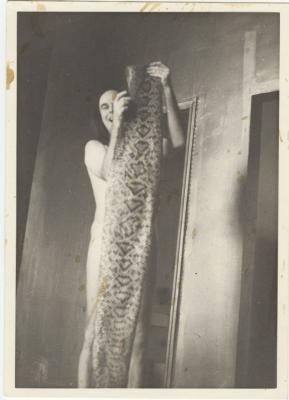
James Lee Byars c. 1970, JLB nude holding snake skin, Courtesy University of California, Berkeley Art Museum and Pacific Film Archive, bequest of James Elliott.
James Lee Byars im Museum of Modern Art New York PS1 (Text engl.)
James Lee Byars: 1/2 An Autobiography
June 15–September 7, 2014
2nd Floor Galleries, MoMA PS1
(Long Island City, NY – April 23, 2014) MoMA PS1 presents the most comprehensive museum survey of James Lee Byars (Detroit, 1932 – Cairo, 1997) organized in North America since his death. The exhibition, which includes documentation and works across a range of mediums and occupies the entire second floor of MoMA PS1, confronts the absence of Byars himself, and more generally highlights the inherently incomplete
summary that a retrospective offers of an artist’s life.
The exhibition
James Lee Byars: 1/2 An Autobiography will be on view from June 15–September 7, 2014.
When Byars was 37 years old—then half an average lifespan—he wrote his “1/2 autobiography.” Sitting in a gallery, he jotted down thoughts and questions every time a visitor approached him, and published them afterwards in a book he also titled "The Big Sample of Byars".
Obsessed by the idea of perfection, Byars produced a remarkable body
of work that strove to give form to his search for beauty and truth. Pursuing what he
called “the first totally interrogative philosophy,” he made and proposed art at scales
ranging from the vastness of outer space to the microscopic level of subatomic particles,
in an attempt to delineate the limits of our knowledge while enacting a desire for
something more.
After studying art and philosophy, Byars moved to
Kyoto in 1958, where he spent much of
the next decade. Influenced by aspects of Japanese Noh theater and Shinto rituals, Byars
created and performed folded paper works at sites including Japanese temples and New
York galleries, and made fabric pieces that served as costumes to join together two or
more people in public performances. Throughout his career, he also produced a large
quantity of printed books, ephemera and correspondence that he distributed among
friends and acquaintances. Dispersed across a wide geography, they attest to Byars’s
desire to be present—however fleetingly—in different places and times.
Byars lived and worked itinerantly, moving between New York, Venice, San Francisco,
Kyoto, Bern, the Swiss Alps, Los Angeles and the American southwest, eventually choosing
to die in Cairo. Posing his art confoundingly between apparent contradictions—the
monumental and the miniscule, the universal and the personal, the luxurious and the
minimal, the relic and the event, the spectacular and the invisible—Byars heightens the
viewing experience. In the aesthetic interrogations he provokes, he suggests that
perfection may occur not simply at the most evanescent edges of form, but also in the
attenuated moments of attention spent trying to discern it.
The Museum of Modern Art played an important role in Byars’s early career. In 1958, after
having been inspired by a
Mark Rothko painting he encountered in his native Detroit,
Byars came to New York and arrived unannounced at MoMA’s reception desk intent on
getting an introduction to Rothko. Instead, he met Dorothy C. Miller, the museum’s first
Curator of Painting and Sculpture, who took an interest in the paper works Byars had been
producing in Japan. Byars convinced her to allow him to mount a brief exhibition in one of
the museum’s stairwells. This event would be remembered as the artist’s first museum
exhibition, and the relationship between Byars and Miller flourished into an extensive
correspondence and gifts to the museum of a number of key performable paper works,
which are included in the exhibition. In 2011, MoMA added important fabric pieces,
ephemera and correspondence with the acquisition of the Daled Collection of American and
European Conceptual Art. In addition to the museum’s holdings, James Lee Byars: 1/2 An
Autobiography features work from private and public collections, and from the artist’s
estate and archives.
The exhibition is co-organized by
MoMA PS1 and Fundación Jumex Arte Contemporáneo,
and curated by Peter Eleey, Curator and Associate Director of Exhibitions and Programs,
MoMA PS1; and Magalí Arriola, Curator, Fundación Jumex Arte Contemporáneo; with
Jocelyn Miller, Curatorial Assistant, MoMA PS1; and Javier Rivero, Curatorial Assistant,
Fundación Jumex Arte Contemporáneo.
Support for the publication is provided by The International Council of The Museum of
Modern Art.
JAMES LEE BYARS: PERFORMANCES
Fall, 2014
The Donald B. and Catherine C. Marron Atrium, second floor and other spaces in the
museum
In conjunction with James Lee Byars: 1/2 An Autobiography, the Department of Media and
Performance Art and MoMA PS1 will present a program of performances in the Atrium and
throughout the Museum. Focusing on his performative works from the late 1960s and
1970s, which bring together the genres of drawing and sculpture with notions of the
ephemeral and disappearance, the series honors the close relationship that Byars
entertained with The Museum of Modern Art.
Organized by Ana Janevski, Associate Curator, Media and Performance Art Department,
The Museum of Modern Art, and Peter Eleey, Curator and Associate Director of Exhibitions
and Programs, with Jocelyn Miller, Curatorial Assistant, MoMA PS1.
PUBLICATIONS
The exhibition is accompanied by two publications that introduce new archival material
and scholarship. The first volume—already available—is a sourcebook of photographs and
documents that features extensive interviews from the late 1970s with the artist that have
not been previously published. The second volume serves as the exhibition’s catalog, and
features several critical texts, including curatorial texts by co-curators Peter Eleey and
Magali Arriola; Ana Janevski, Associate Curator in the Department of Media and
Performance at The Museum of Modern Art on Byars’s early performances; art historian
Pan Wendt on the artist’s “costume” and performable fabric works; and Japanese art
historian curator Shinobu Sakagami on Byars' time in Japan. Both books are fully bilingual
English-Spanish, published jointly by MoMA PS1 and Fundación Jumex Arte
Contemporáneo, and distributed by Koenig Books.
ABOUT THE ARTIST
James Lee Byars was born in Detroit, Michigan in 1932 and studied art and psychology at
Wayne State University. Following 1958, the same year as his near-legendary ad hoc
presentation at MoMA, Byars spent the subsequent decade Byars living and working in
Japan where he presented many performances and exhibitions, including “The Performable
Square” in the National Museum of Modern Art, Kyoto, in 1962. In 1964 he was invited to
present three performances at the Carnegie Museum of Art. Byars returned to America in
1967, dividing his time between New York and Los Angeles; by the 1970s he began to
spend increasing amounts of time in Europe. Since that time Byars has been the subject of
numerous gallery and museum exhibitions worldwide, including Stedelijk van
Abbemuseum, Eindhoven; Kunsthalle Düsseldorf; IVAM Centre del Carme, Valencia;
Castello di Rivoli/Museo d’Arte Contemporanea, Turin; The Henry Moore Institute, Leeds;
and Fundaçao de Serralves, Porto. Important posthumous exhibitions include The Epitaph
of Con. Art is which Questions have disappeared?, Kestner Gesellschaft, Hannover (1999);
The Arts Club of Chicago (2000); Life Love and Death, Schirn Kunsthalle, Frankfurt and
Musée d’Art moderne et contemporain de Strasbourg (2004); The Perfect Silence, Whitney
Museum of American Art (2005); I’m Full of Byars, Kunstmuseum Bern (2008).
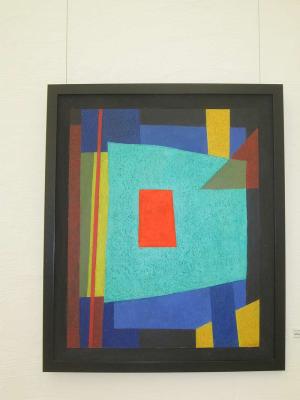
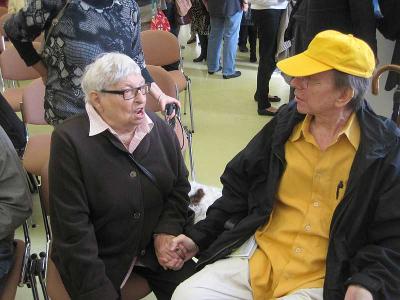
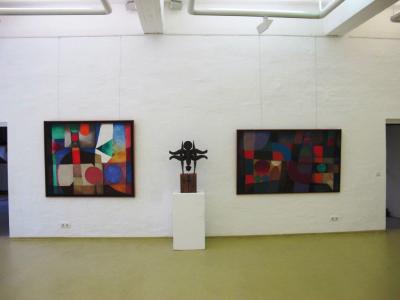
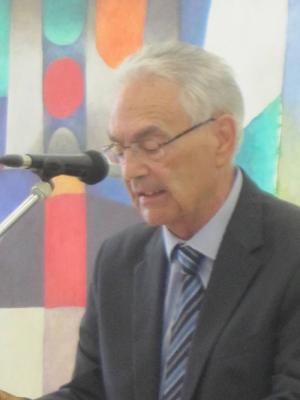
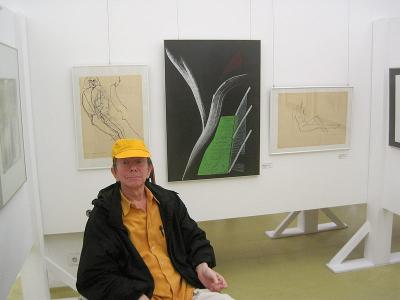
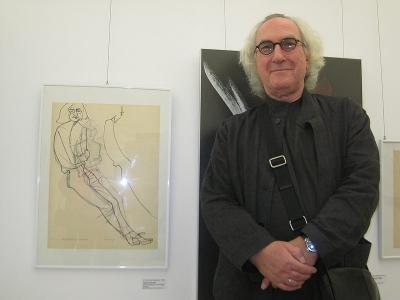
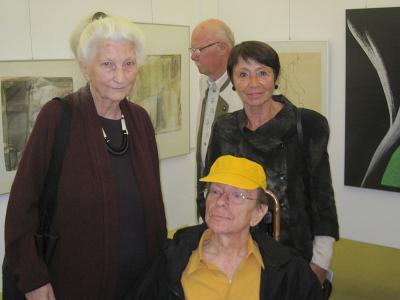

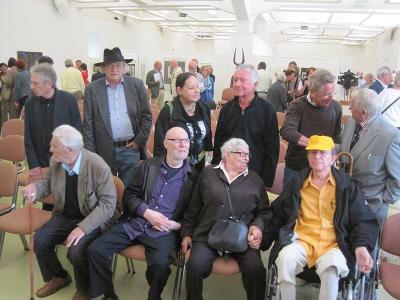
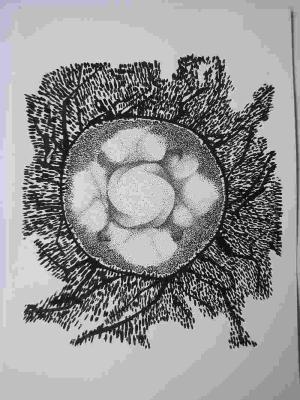 Foto: TGR
Foto: TGR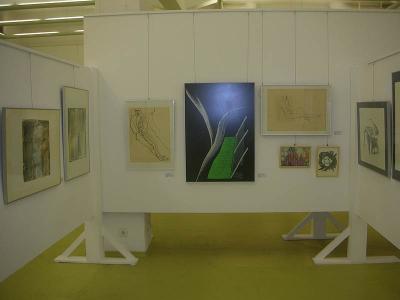 Foto: Werner Korb
Foto: Werner Korb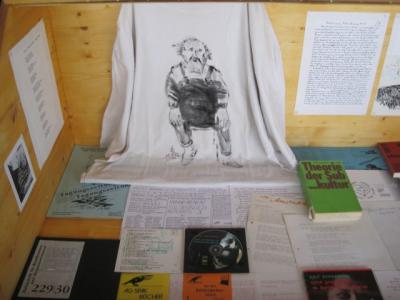
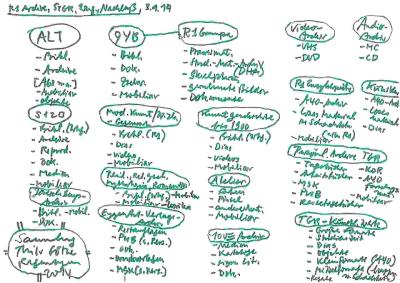
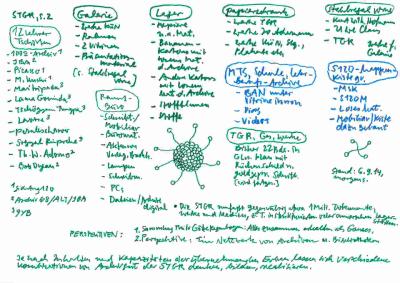
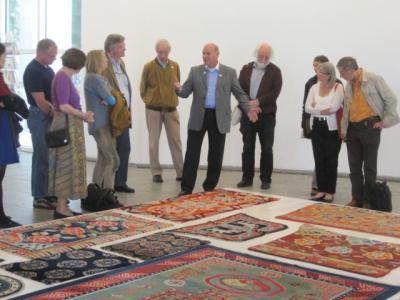 Peter Mauch im Gespräch mit Gästen zu seiner Sammlung, Foto: Thilo Götze Regenbogen.
Peter Mauch im Gespräch mit Gästen zu seiner Sammlung, Foto: Thilo Götze Regenbogen.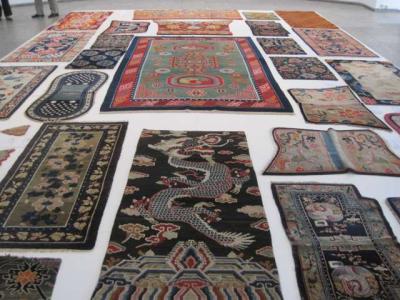 Foto: Thilo Götze Regenbogen
Foto: Thilo Götze Regenbogen James Lee Byars c. 1970, JLB nude holding snake skin, Courtesy University of California, Berkeley Art Museum and Pacific Film Archive, bequest of James Elliott.
James Lee Byars c. 1970, JLB nude holding snake skin, Courtesy University of California, Berkeley Art Museum and Pacific Film Archive, bequest of James Elliott.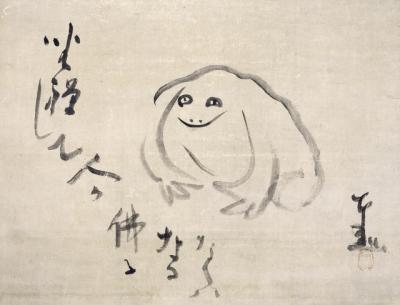 Zen-Meister Sengai Gibon (1750–1837), Meditierender Frosch (zazengaeru), Tusche auf Papier 40,3 x 53,8 cm, Copyright Idemitsu Museum of Arts Tokyo, zu sehen in Serie 1 der Ausstellung 18.5.-29.6.14.
Zen-Meister Sengai Gibon (1750–1837), Meditierender Frosch (zazengaeru), Tusche auf Papier 40,3 x 53,8 cm, Copyright Idemitsu Museum of Arts Tokyo, zu sehen in Serie 1 der Ausstellung 18.5.-29.6.14.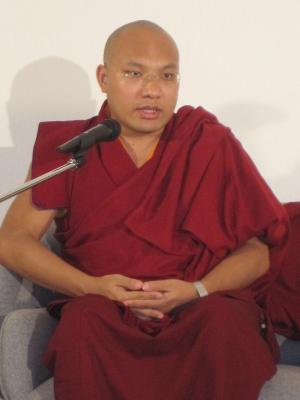 Seine Heiligkeit, der 17. Karmapa, Ogyen Trinley Dorje, im Tibethaus Deutschland, Foto: Thilo Götze Regenbogen
Seine Heiligkeit, der 17. Karmapa, Ogyen Trinley Dorje, im Tibethaus Deutschland, Foto: Thilo Götze Regenbogen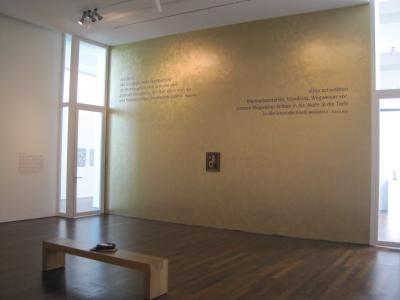 Jawlensky-Arp-Raum im Museum Bahnhof Rolandseck 2014 (Ausschnitt mit Colyn de Coters „Die heilige Veronika mit dem Schweißtuch“ [Öl/Lwd., um 1510] aus der Sammlung Rau für UNICEF), Foto: TGR.
Jawlensky-Arp-Raum im Museum Bahnhof Rolandseck 2014 (Ausschnitt mit Colyn de Coters „Die heilige Veronika mit dem Schweißtuch“ [Öl/Lwd., um 1510] aus der Sammlung Rau für UNICEF), Foto: TGR. Prof. Dr. Wieland Schmied (1929-2014), Foto: AP.
Prof. Dr. Wieland Schmied (1929-2014), Foto: AP. 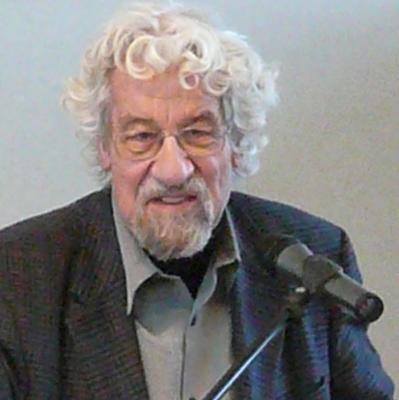 Foto: Peter Fuhrmann 2007.
Foto: Peter Fuhrmann 2007.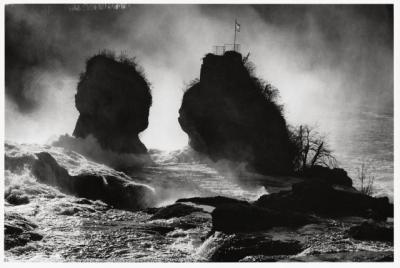 Barbara Klemm, Rheinfall bei Schaffhausen, Copyright Barbara Klemm 2013.
Barbara Klemm, Rheinfall bei Schaffhausen, Copyright Barbara Klemm 2013.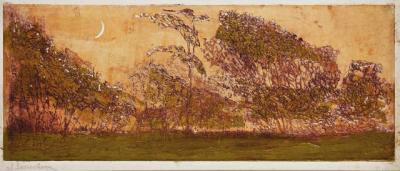 Anna Gerresheim, Mond über Buschgehölz, Radierung, 1903, Copyright Privatsammlung.
Anna Gerresheim, Mond über Buschgehölz, Radierung, 1903, Copyright Privatsammlung.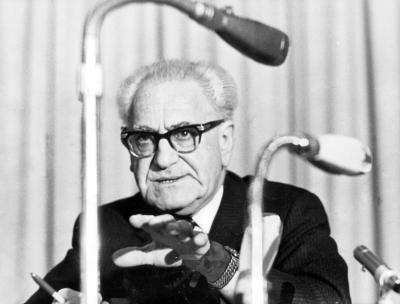 Fritz Bauer, Foto: AP.
Fritz Bauer, Foto: AP.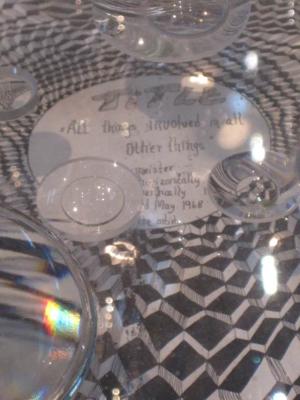 Mary Bauermeister, All things involved in all other things (Detail), Foto: Thilo Götze Regenbogen 2010/2014.
Mary Bauermeister, All things involved in all other things (Detail), Foto: Thilo Götze Regenbogen 2010/2014.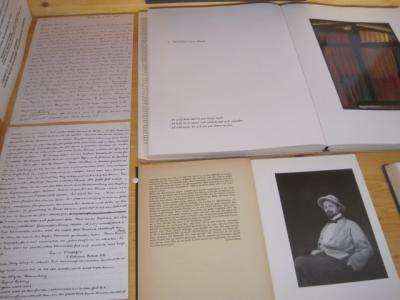 Foto: Thilo Götze Regenbogen. Seit März und noch bis Juni ist in Raum 1 Hofheim die 9. Feldbefreier-Vitrine zu sehen, zum 150. Geburtstag von Alexej von Jawlensky dessen Freundschaft und Korrespondenz mit dem Ex-Nabi und Benediktiner-Pater Jan Willibrord Verkade aus Beuron gewidmet. Wie in meinem Buch Der verschollene Diskurs (2004) nachgelesen werden kann, geht es zwischen den beiden um einen für die Beziehung von Spiritualität und Kunst grundlegenden Streit, bei dem argumentativ Jawlensky nicht mithalten konnte. Wie man aber an seinen Werkfolgen und insbesondere an den Wiesbadener Meditationen der Spätzeit sehen kann, hat er das selbst beauftragte Pensum zur Vollendung gebracht und so etwas wie die Ikonenmalerei des 20. Jahrhunderts geschaffen, während Verkade eine Fußnote seiner Nabi-Zeit geworden ist, aber auch eine Reihe sehr erfolgreicher Bücher geschrieben hat, von denen in der Vitrine drei zu sehen sind.
Foto: Thilo Götze Regenbogen. Seit März und noch bis Juni ist in Raum 1 Hofheim die 9. Feldbefreier-Vitrine zu sehen, zum 150. Geburtstag von Alexej von Jawlensky dessen Freundschaft und Korrespondenz mit dem Ex-Nabi und Benediktiner-Pater Jan Willibrord Verkade aus Beuron gewidmet. Wie in meinem Buch Der verschollene Diskurs (2004) nachgelesen werden kann, geht es zwischen den beiden um einen für die Beziehung von Spiritualität und Kunst grundlegenden Streit, bei dem argumentativ Jawlensky nicht mithalten konnte. Wie man aber an seinen Werkfolgen und insbesondere an den Wiesbadener Meditationen der Spätzeit sehen kann, hat er das selbst beauftragte Pensum zur Vollendung gebracht und so etwas wie die Ikonenmalerei des 20. Jahrhunderts geschaffen, während Verkade eine Fußnote seiner Nabi-Zeit geworden ist, aber auch eine Reihe sehr erfolgreicher Bücher geschrieben hat, von denen in der Vitrine drei zu sehen sind. 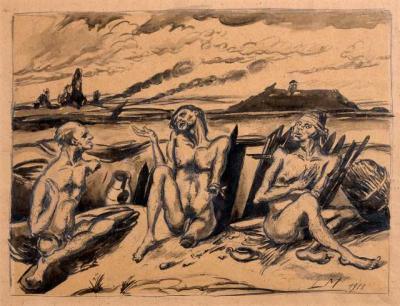 Ludwig Meidner, Schrecken des Krieges, 1911, Feder, Pinsel auf Papier, Courtesy Skulpturenmuseum Glaskasten Marl 2014.
Ludwig Meidner, Schrecken des Krieges, 1911, Feder, Pinsel auf Papier, Courtesy Skulpturenmuseum Glaskasten Marl 2014. 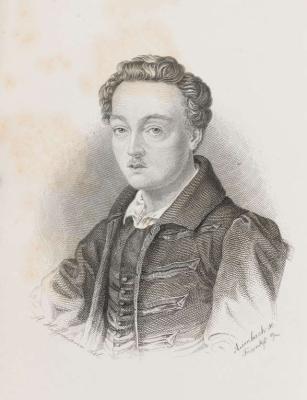 August Hoffmann (Zeichnung), Anton Limbach (Stich), Georg Büchner, Frontispiz in: Karl Emil Franzos, Georg Büchner, Sämmtliche Werke und handschriftlicher Nachlaß, 1879, Georg Büchner Gesellschaft e.V., Marburg, Foto: G. Schuster. Hier der aktualisierte Newsletter als PDF zum Download:
August Hoffmann (Zeichnung), Anton Limbach (Stich), Georg Büchner, Frontispiz in: Karl Emil Franzos, Georg Büchner, Sämmtliche Werke und handschriftlicher Nachlaß, 1879, Georg Büchner Gesellschaft e.V., Marburg, Foto: G. Schuster. Hier der aktualisierte Newsletter als PDF zum Download: 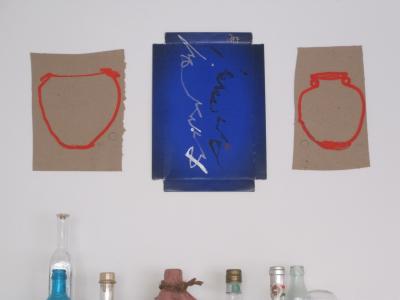 Thilo Götze Regenbogen, 3 Werke aus der neuen Ausstellung "Thilo Götze Regenbogen, Der neue Raum 1" (2003-2014), Hofheim, Februar bis Juli 2014. Siehe auch Portfolio 9 dazu im Bereich Publikationen:
Thilo Götze Regenbogen, 3 Werke aus der neuen Ausstellung "Thilo Götze Regenbogen, Der neue Raum 1" (2003-2014), Hofheim, Februar bis Juli 2014. Siehe auch Portfolio 9 dazu im Bereich Publikationen: 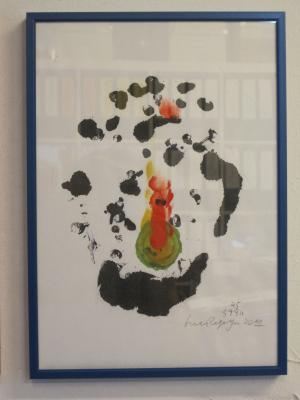 Thilo Götze Regenbogen, WV-Nr. 3390 aus dem sechsten Raum 1 Akzent "Der neue Raum 1", Februar-Juli 2014. Hier PORTFOLIO 9 zum Download
Thilo Götze Regenbogen, WV-Nr. 3390 aus dem sechsten Raum 1 Akzent "Der neue Raum 1", Februar-Juli 2014. Hier PORTFOLIO 9 zum Download
